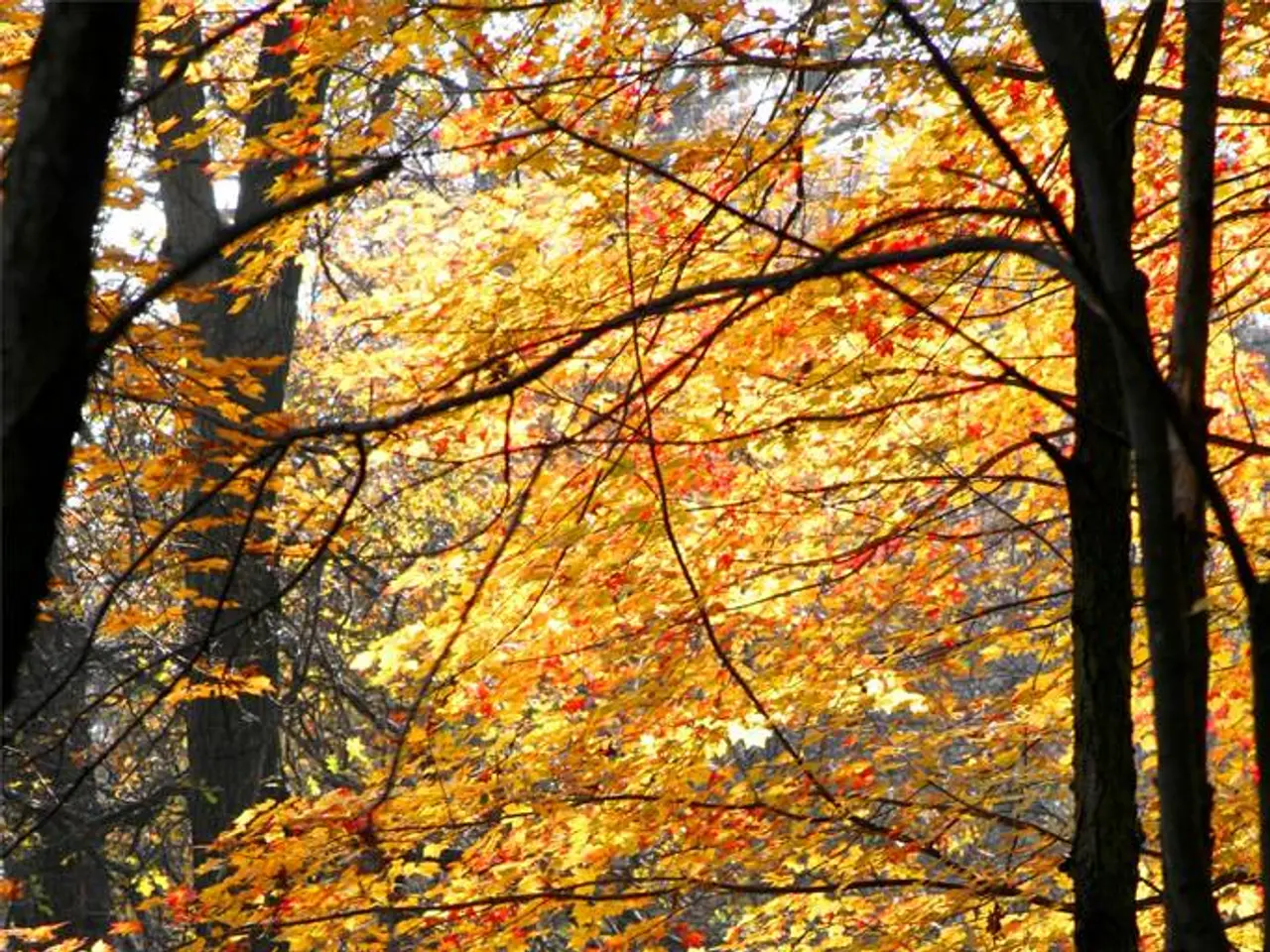Miniature Trees and Compact Arrangements for Delicate Charm in Bonsai Crafting
In the miniature world of Mame Bonsai, visual harmony, spatial relationships, and contextualization are key elements to create a visually stunning and cohesive display. These tiny trees, under 6 inches, are a testament to the human spirit's capacity to create beauty in the smallest of forms.
Common species used for Mame Bonsai include the Japanese Maple (Acer palmatum), Cherry varieties such as Kwanzan and Okame cherry, Dwarf Black Olive (Bucida spinosa), and Callicarpa japonica (Japanese Beauty Berry). These species are especially suitable for miniaturization due to their naturally small leaves or leaf structures, slow growth habits, and capacity to develop fine branching and interesting bark or foliage textures even at a very small scale.
The Japanese Maple, with its delicate, finely divided leaves, offers vivid seasonal color changes that enhance their visual appeal at small sizes. Cherry varieties like Kwanzan and Okame offer compact growth, attractive blossoms, and the ability to develop in a bonsai medium. The Dwarf Black Olive has a naturally slow growth rate, minimal internodes, and dramatic contorted branching with refined small foliage, perfect for expressing architectural forms in miniature. Callicarpa japonica, a small shrub, can be maintained at tiny sizes and produces decorative berries and attractive foliage, enhancing the miniature aesthetic.
All these species share adaptability to root confinement without rapid decline, slow growth rates or the ability to slow growth with bonsai techniques, fine branching structures and small leaves/foliage that maintain proportion even under aggressive pruning, and hardiness to growing conditions typical for indoor/outdoor bonsai. This makes them excellent candidates for developing and maintaining very small-scale bonsai that retain detail, character, and aesthetic appeal.
Pruning is an exercise in subtlety in the world of Mame Bonsai. It requires patience and dedication, as styling a Mame bonsai tree from scratch can take anywhere from several months to several years, depending on the species, climate, and level of detail desired. Pruning for proportion is a delicate art requiring understanding of the trees' unique growth patterns and responses to trimming.
Creating a Mame bonsai display using trees of diverse species is possible, provided that their unique needs and aesthetics are balanced. Overwatering is a common cause of death in bonsai trees, and watering should be done when the top 1-2 inches of soil feel dry to the touch, typically every 2-3 days in summer and every 4-5 days in winter. Mame bonsai trees are more susceptible to pests and diseases due to their small size, and prompt detection and addressing of any issues is essential to prevent damage.
Crafting captivating Mame bonsai scenes involves carefully considering the visual narrative and spatial relationships established in a group display, focusing on creating enchanting miniature landscapes that evoke a sense of wonder and serenity. Common challenges for Mame bonsai include over-watering, pests and diseases, and temperature fluctuations. Mame bonsai trees can be grown indoors with limited natural light, provided that low-light tolerant species are selected and supplemental grow lights are provided.
In conclusion, species chosen for Mame Bonsai combine compact foliage, slow growth, and structural elegance at reduced size, allowing for effective miniaturization and vibrant, detailed small trees. They serve as a reminder that even in the most diminutive of creations, lies a world of wonder, waiting to be unearthed.
- For individuals interested in fashion-and-beauty, the world of Mame Bonsai provides a unique opportunity to appreciate the intricate detail and visual harmony found in miniature trees.
- Beyond the realm of trees, the concept of miniaturization can extend to other aspects of lifestyle, such as home-and-garden arrangements, including gardening techniques and small-scale displays.
- While traveling, one might come across various pet stores showcasing tiny pets, much like Mame Bonsai, that have been adapted to live in smaller environments, highlighting the adaptability of life to various scales.
- Engaging in education-and-self-development, one may find courses on food-and-drink that explore the science and art of creating miniature desserts or hors d'oeuvres, mirroring the focus on proportion found in Mame Bonsai.
- After a long day of shopping for new clothes or home essentials, one can relax by offering a well-deserved treat to a pet or enjoying a miniature dessert, all while appreciating the captivating artistry found in the tiny, yet vibrant world of Mame Bonsai.




